Trash Chute, Construction Chute, Roofing Chute & Demo Chute Wholesaler
Trash Chute, Construction Chute, Roofing Chute & Demo Chute Wholesaler

What is Trash Chute Polyethylene Rotation Molding?
The use of construction chutes in all construction projects involving high-rise buildings is mandatory, according to the Occupational Safety and Health Administration (OSHA). Because of this, we at Hod Chutes provide high-grade, lightweight, and top-quality construction chutes to building and construction on projects, renovations, and lots more. We’ll discuss trash chute polyethylene rotation molding and the many benefits including debris chute pricing and usability.
We use trash chute polyethylene rotation molding to design and manufacture our chutes. Our debris chutes are high grade and manufactured to meet the best industry standard. The quality of chutes matters when in use. Poor quality chutes can cause a big hassle, like breaking during use. However, we offer construction chutes that are reliable, strong, and durable. The trash chute polyethylene rotation molding method ensures this.
Trash chute polyethylene rotation molding is used for manufacturing a piece of hollow parts and double- walled open plastic containers like tanks, coolers, and chutes. Our trash chute polyethylene rotation molding is also known as roto-molding. Trash chute polyethylene rotation molding involves rotating the mold for even distribution of plastic throughout the manufacturing process of the chutes. Other methods of manufacturing construction chutes are available, but trash chute polyethylene rotation molding is the best.
Trash Chute Polyethylene Rotation Molding Benefits
At Hod Chutes, we use trash chute polyethylene rotation molding. The manufacturing technique offers several benefits that are crucial to the final results and quality. The method allows careful design and engineering that enables full control over chutes thickness. Below are some of the benefits of the process.
1. Versatility of Design
Rotational molding involves melting plastic until it conforms to the shapes of the mold. And due to the capacity of Polyethylene to withstand high temperature for a long time during manufacturing, it can be molded into the desired shape without losing stability. Also, the technique enables the production of products without having weld lines. Our chutes also come in a wide array of styles, colors, and surface finishes. In view of this, we produce debris chutes in a wide array of designs, colors, sizes, and finishes.
2. Lightweight Products
The rotational molding process enables the manufacturing of much lighter construction chutes that are easy to transport and install without exposing workers to injury on-site. You do not need to spend huge money on hiring heavy machinery to lift or install our manufactured chutes. This enables quick delivery to project sites and installation according to the OSHA regulations.
Comparing Polyethylene Rotation Molding & Blow Molding
Polyethylene rotation molding and blow molding are two different types of plastic manufacturing processes. Each has its own advantages and disadvantages, making them suitable for different applications. In this article, we will compare the two processes, looking at the differences between polyethylene rotation molding and blow molding. We’ll explore the use cases of each process, as well as their respective strengths and weaknesses so that you can make an informed decision when selecting a manufacturing process for your project.
We compare the two processes in terms of cost, speed, accuracy, and other factors to help you decide which one is best for your project. We will also discuss the use cases of each process and how they can be used in various industries. By the end of this article, you should have a better understanding of polyethylene rotation molding vs blow molding. Both methods allow for easy trash chute installation on construction sites, demoition sites and roofing projects.
Benefits of Using Polyethylene Rotation Molded Parts
Polyethylene rotation molded parts offer a number of advantages over blow molded parts. These include cost savings, improved structural integrity, and greater design flexibility. The process of rotation molding is also much faster than blow molding, meaning that production times are significantly reduced. Additionally, the process produces uniform wall thicknesses and smooth surfaces with fewer flaws than other processes. As a result, polyethylene rotation molded parts are becoming increasingly popular for a range of applications in many industries.
Polyethylene Rotation Molding is a process that has been used to manufacture plastic parts for decades. It offers many advantages over other forms of plastic molding, including cost savings, high-quality production, and design flexibility. With the rotomolding process, polyethylene plastics can be formed into intricate shapes with greater accuracy and precision than other methods. This article will discuss the benefits of using polyethylene rotation molding for the production of plastic parts.
Polyethylene blow molding is a process used to manufacture plastic hollow parts and containers. It is an efficient and cost-effective way of producing complex shapes with high precision. The advantages of using polyethylene blow molding are numerous, including reduced manufacturing costs, faster production times, improved product quality, and increased design flexibility. Additionally, it can be used to create products that are lightweight yet strong and durable. This article will discuss the various benefits of using polyethylene blow molding in the manufacturing process.
What are the Different Types of Thickness Used in Polyethylene Rotation Molded Parts?
Polyethylene rotation molded parts are widely used in many industries due to their strength and durability. But what type of thickness is best for these parts? This article will explore the different types of thicknesses that can be used for polyethylene rotation molded parts. We’ll look at the range of thicknesses available, the advantages and disadvantages of each, and how to choose the right thickness for your application. We’ll also discuss how different types of trash chute polyethylene rotation molding processes can affect the final product’s thickness. Finally, we’ll explore some common use cases and scenarios where specific types of thickness may be more suitable than others.
How Long Does it Take to Make a Trash Chute Polyethylene Rotation Molding
Making a polyethylene rotation can be a complex process, depending on the complexity of the product. The time required to make one depends on a number of factors, including the type of polyethylene used, the size and shape of the product, and any additional processes that may be involved. Generally speaking, it can take anywhere from a few days to several weeks for an experienced technician to complete a polyethylene rotation.
Understanding the Anatomy of Trash Chute Polyethylene Rotation Molding
Rotationally molded parts are custom-made products created from polyethylene, a type of plastic. The process of creating these parts is called rotomolding and involves the use of a special mold which is rotated and heated in order to create the desired shape.
Rotomolding has become an increasingly popular manufacturing process due to its ability to produce complex shapes with high accuracy and repeatability. It also allows for the creation of custom parts that can be used in many different applications. In this article, we will discuss the anatomy of a rotationally molded part, including its design considerations, materials used, and its advantages over other types of manufacturing processes.
Calculate the Cost of Trash Chute Polyethylene Rotation Molding Products?
Calculating the cost of polyethylene rotation and blow molded products is a complex process that requires knowledge of various factors such as the type of plastic used, the size and shape of the product, and the number of molds needed. By taking into account all these factors, it is possible to accurately estimate the cost of producing a plastic injection molded part.
In this article, we will discuss how to calculate the cost associated with producing polyethylene rotation and blow molded products. We will look at how to factor in plastic injection mold costs, pricing for plastic molds, and other important considerations when estimating the cost of producing a plastic injection molded part.
Factors that Affect the Price of Polyethylene Rotation & Blow Molded Parts
The price of polyethylene rotation and blow molded parts is largely determined by a number of factors. These include the type of material used, the complexity of the part, the size and shape of the part, and other production-related costs. This article will discuss how each factor affects the cost of rotational molding and blow molding parts made from polyethylene. Additionally, it will look at how to estimate a fair price per part for PE rotational or blow molded components.
Takeaway
Hod Chutes manufactures and supplies high-quality construction chutes that have uniform sizes, thicknesses, and high stability. Contact us today for construction chutes for rental.
ISO CERTIFIED

SECURED PAYMENT
